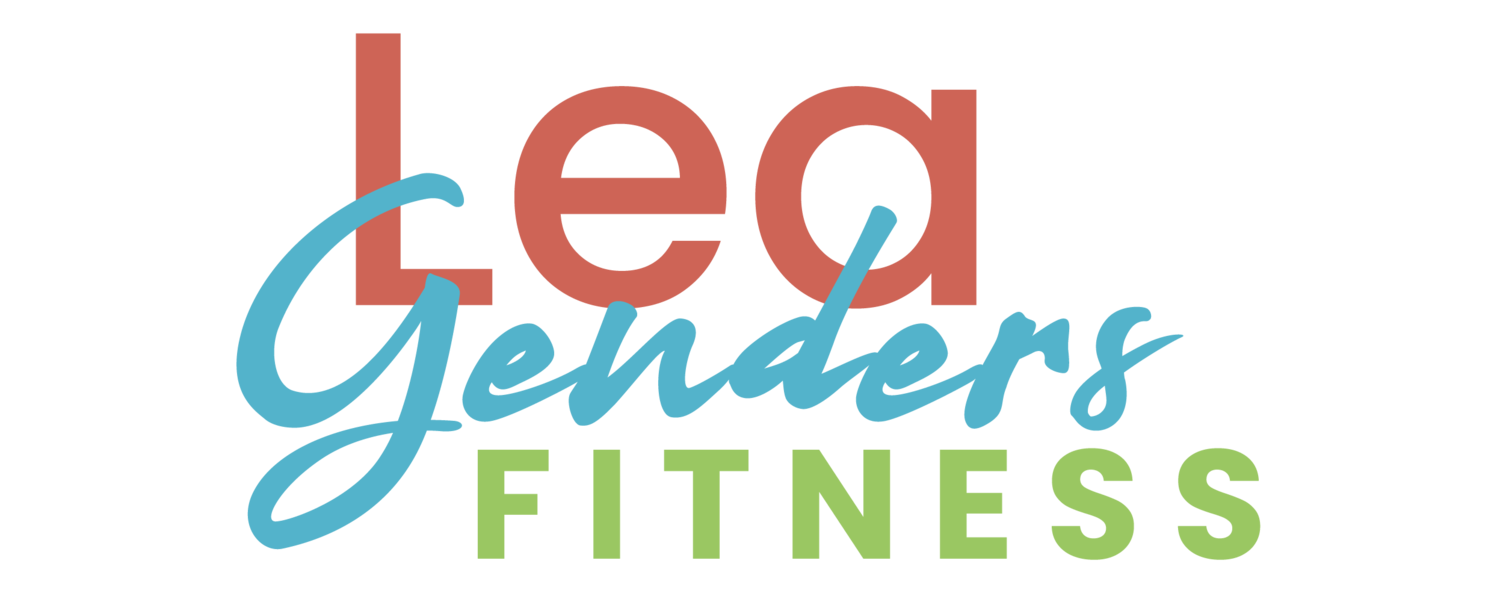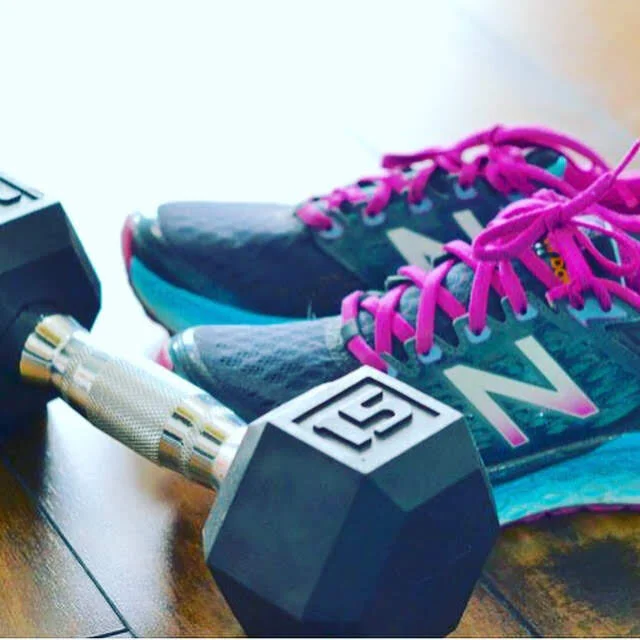What is strength training? It might seem like a silly question—it's training for strength, right? Yes, but there's often confusion about what that means.
I talk a lot on social media about the importance of strength training and its benefits beyond just building bigger muscles. Some people—primarily women—think they don't need strength training because they're not interested in getting "big." But strength training offers so much more than big muscles (although, for the record, my personal goal is to build big muscles, and that's okay, too!).
Strength training builds stronger bones by increasing bone density, which reduces the risk of falls and fractures now and as you age. It also helps protect and stabilize your joints by strengthening the muscles around them, reducing the likelihood of injury. Another major benefit? Strength training improves your metabolism. Muscles are metabolically expensive, meaning your body burns more energy to maintain muscle. Simply put, the more muscle you have, the more calories your body burns just by existing—no extra cardio is required! A higher metabolism means you can eat more calories without storing them as fat because they are needed to maintain and grow muscle tissue.
Maintaining and building muscle as you lose fat reduces your risk of regaining weight because your metabolism stays elevated. Plus, muscles build confidence and give you that "toned" look many women desire.
Benefits of Strength Training
Strength training is more than building big muscles. While muscle growth is one benefit, the impact of strength training goes far beyond aesthetics:
Bone Health: Strength training increases bone density, reducing the risk of fractures and falls, especially as you age.
Joint Protection: Strong muscles stabilize and protect joints, reducing the likelihood of injuries.
Metabolic Boost: Muscle tissue burns more calories at rest, helping you maintain a healthy metabolism. This means you can enjoy more food without storing it as fat.
Confidence and Tone: Building muscle boosts your confidence and gives you the "toned" look many women desire.
Here's the truth: to look toned, you must build muscle. Toned equals muscle. As a personal trainer and health coach, I've met countless women whose goal is to get toned but then avoid the specific actions required to build muscle.
I get it—the fitness industry doesn't make it easy. The internet, social media, and fitness advertisements promise the same outcome (losing fat and gaining muscle) while selling 100 different (mostly ineffective)ways to get there. Strength training is one of the most effective and direct ways to build muscle and achieve that "toned" look.
Is This Strength Training? Let's Break It Down
When I talk to people about strength training, they often ask:
Is Pilates strength training?
Is Yoga strength training?
Does running hills count as strength training?
What about wearing a weighted vest while walking or jogging?
The answer is yes…and then no. Let me explain.
If you've never done hill running (or haven't in a while), starting to do it consistently can provide resistance for your hamstrings, glutes, and calves, helping to build strength and muscle. Hill training has many other benefits, including improving cardiovascular health and running performance.
However, the human body is an adaptation machine. When you stress your body with strength-building activities, it adapts, and you get stronger—hooray!
But here's the catch: to continue building strength, you must keep challenging your muscles by adding more resistance over time. That's why hill running is great for initial strength building, but it will only qualify as progressive strength training if you keep finding steeper hills (and even then, you'll eventually hit your limit). Not to mention, hill running is not full body strength training; balancing upper and lower body strength is key.
The same logic applies to Yoga and mat Pilates. These activities build strength initially because they require resistance (usually your body weight). However, unless you're increasing the resistance or difficulty over time, they stop being effective for building strength. Yoga and Pilates are fantastic for flexibility, balance, and overall health but don't provide the progressive overload needed for sustained strength gains.
The Key to Strength Training: Progressive Overload
The secret to strength training is progressive overload. It means continually challenging your muscles by increasing the resistance, volume, or intensity. Without this incremental increase, your body adapts, and you stop progressing, and it ceases to remain effective strength training.
Even if you're holding weights or your workout feels hard, it doesn't necessarily mean you're strength training. To build strength, you need to lift heavy weights with proper progression. Sweating, being out of breath, or feeling tired and sore doesn't automatically equal strength training.
While excellent for overall fitness and fun, many group fitness classes don't provide the structure for true strength training. Are you lifting progressively heavier weights? Are you increasing the difficulty of your exercises over time? Are you taking adequate rest breaks between sets? If the answer is no, it's likely not effective strength training.
Why Most Classes and Modalities Don't Count as Strength Training
Group fitness classes, Yoga, boot camps, and similar activities offer numerous benefits for fitness and health, but they typically fall short of progressive strength training. Here's why:
Lack of Progression: Are you lifting heavier weights or doing more advanced exercises over time? If not, the stimulus remains the same, and your muscles stop adapting.
Insufficient Rest: Many classes emphasize continuous movement, which prevents your muscles from fully recovering between sets. Recovery is key for strength development.
Focus on Cardio or Endurance: Just because something feels hard or makes you sweat doesn't mean it's building muscle.
This doesn't mean you should avoid these activities—they're excellent for cardiovascular health, flexibility, and overall fitness (and fun). But they're not a direct path to building strength and muscle.
How to Get Started WITH STRENGTH TRAINING
I'm not saying you should ditch your favorite class, Pilates, Yoga, or hill running—these activities have many benefits and can be part of a balanced exercise routine. But if your goal is to build muscle, get stronger, or achieve that toned look, you must prioritize progressive strength training.
It doesn’t take much. Hit all major muscle groups two times per week to start seeing results—plenty of time to get in your flexibility or cardio classes for their specific benefits.
So, how do you do it?
Focus on resistance exercises that challenge your muscles. Lift heavy enough weights that the last two reps of your set feel difficult but doable. If you finish a set and feel like you could do five more reps, it's a sign you could go heavier.
Implement progressive overload by gradually increasing your weight, reps, sets, or intensity. It might mean adding a few pounds to your lifts, slowing your tempo, or progressing to more advanced exercises.
Give yourself adequate rest between sets. You might not be lifting heavy enough if you can jump right into the next set without resting.
Stick to the basics and repeat the same exercises consistently. "Muscle confusion" is a myth. The best way to build strength is to repeat foundational exercises and progressively add resistance over time.
Three Questions to Determine If You're Strength Training
To assess whether your activity qualifies as strength training, ask yourself:
Is it providing resistance?
Can I continually increase the resistance over time?
Am I allowing for adequate rest between sets?
If you answered yes to all three, congratulations—you're strength training!
The Lifetime Benefits of Strength Training
Strength training may help you look great now, but its real power lies in how it sets you up for a long, healthy, independent life. Building muscle improves your strength, stability, and confidence at every stage of life. As you age, it becomes even more critical for maintaining mobility, reducing injury risk, and staying active.
Need Help? Let's Get Strong Together
If you’re ready to take your fitness to the next level and start 2025 strong, join my 6-week Kick-Start Challenge in January! This program includes one-on-one Zoom coaching for habits and accountability, workouts, nutrition guidance, a body composition scale, and a heart rate monitor—all designed to help you build strength and confidence.
Not sure if it’s right for you? Let’s talk! I’m offering a free consultation call—no strings attached. This isn’t a sales call, and I won’t try to convince you of anything. My only goal is to hear your story, understand your goals, and genuinely help you decide if this program aligns with what you’re looking for. It’s not for everyone, and that’s okay. I’ll only invite the people I believe I can help make a real difference. Are you in? Click here to schedule your free call on my calendar. I’d love to chat with you!
Do you know someone who might benefit from this blog post? It helps me when you share with your friends and followers.
Questions? I’d love to help.
I am a master health coach, personal trainer, and running coach, dedicated to helping YOU get strong, body and mind!






























Are outdated fitness beliefs slowing you down? From extreme exercise to restrictive diets, it’s time to separate fact from fiction and unlock your best results yet. Don’t let these common myths hold you back any longer!